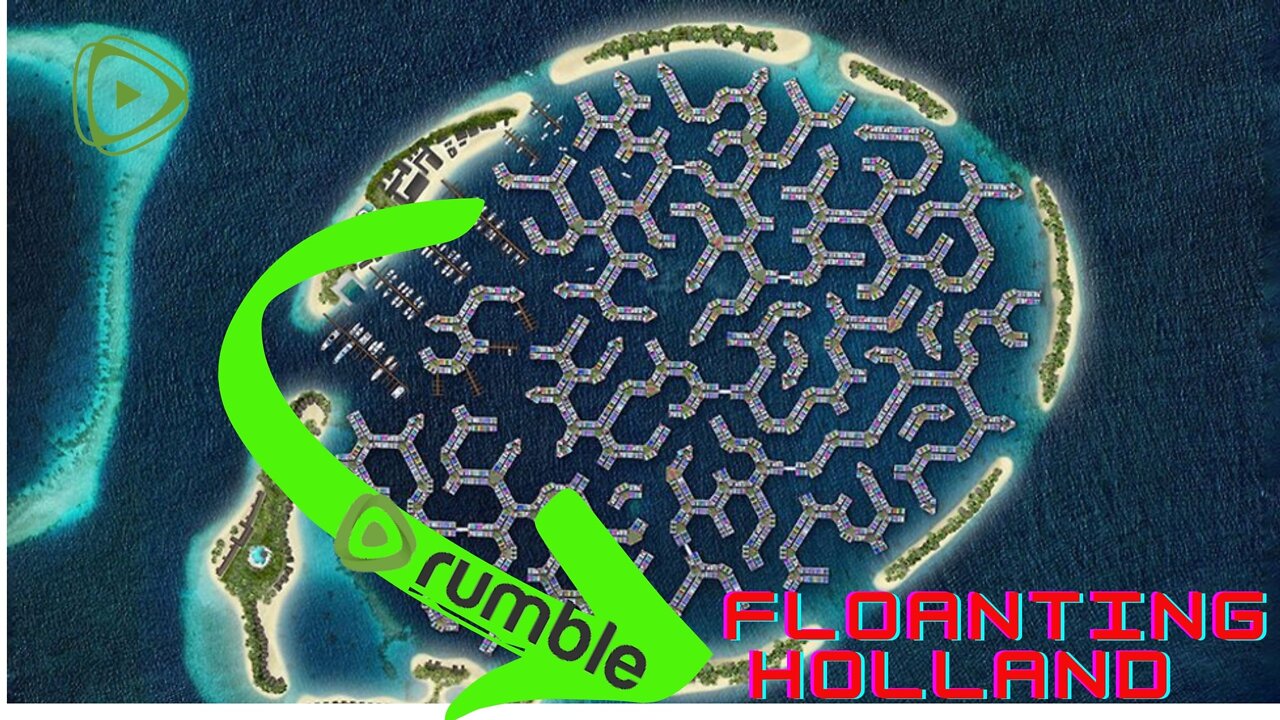Premium Only Content

⛵ #floating #holland!⛵
💡floating holland!💡
💡Faced with worsening floods and a shortage of housing, the Netherlands is seeing growing interest in floating homes. These floating communities are inspiring more ambitious Dutch-led projects in
flood-prone nations, from French Polynesia to the Maldives.
💡When a heavy storm hit in October, residents of the floating community of Schoonschip in Amsterdam
had little doubt they could ride it out. They tied up their bikes and outdoor benches, checked in with neighbours to ensure everyone had enough food and water, and hunkered down as their neighborhood slid up and down its steel foundational pillars, rising along with the water and
descending to its original position after the rain subsided.
"We feel safer in a storm because we are floating," says Siti Boelen, a Dutch television
producer who moved into Schoonschip two years ago. "I think it's kind of strange that
building on water is not a priority worldwide."
As sea levels rise and supercharged storms cause waters to swell, floating neighbourhoods
offer an experiment in flood defence that could allow coastal communities to better withstand
climate change. In the land-scarce but densely populated Netherlands, demand for such homes is growing. And, as more people look to build on the water there, officials are working to update zoning laws to make the construction of floating homes easier.
💡"The municipality wants to expand the concept of floating because it is multifunctional use of space for housing, and because the sustainable way is the way forward," says Nienke van
Renssen, an Amsterdam city councillor from the GreenLeft party.
The floating communities in the Netherlands, which emerged in the past decade, have served
as proof of concept for larger-scale projects now being spearheaded by Dutch engineers.
These are not just in European countries such as Britain, France and Norway, but also French
Polynesia and the Maldives, where sea level rise in the Indian Ocean nation now poses an
existential threat. There is even a proposal for floating islands in the Baltic Sea on which
small cities would be built.
Living on water is normal for us – Marjan de Blok
A floating house can be constructed on any shoreline and is able to cope with rising seas
or rain-induced floods by remaining atop the water's surface. Unlike houseboats, which can
easily be unmoored and relocated, floating homes are fixed to the shore, often resting on
steel poles, and are usually connected to the local sewer system and power grid. They are
structurally similar to houses built on land, but instead of a basement, they have a concrete
hull that acts as a counterweight, allowing them to remain stable in the water. In the Netherlands,
they are often prefabricated, square-shaped, three-storey townhouses built offsite with conventional materials such as timber, steel and glass. For cities facing worsening floods and a shortage of land for housing, floating homes are one potential blueprint to expand urban housing in the age of climate change.
In the Netherlands, a country which is largely built on reclaimed land and a third of which remains below sea
level, the idea is not so far-fetched. In Amsterdam, which has almost 3,000 officially registered traditional houseboats across its canals, hundreds of people have moved into floating homes in previously neglected neighbourhoods.
💡Schoonschip, designed by Dutch firm Space&Matter, consists of 30 houses, half of which are duplexes, on a canal in a former manufacturing area. The neighbourhood is a short ferry ride from central Amsterdam, where many of the residents work. Community members share nearly everything, including bikes, cars and food bought from local farmers. Each building runs its own heat pump and devotes roughly a third of its roof to greenery and solar panels. Residents sell surplus power to one another and to the national grid.
💡"Living on water is normal for us, which is exactly the point," says Marjan de Blok, a Dutch TV director who initiated the project in 2009 by organising the collective of architects, legal experts, engineers and residents who worked to get the project off the ground.
💡There's no longer this idea of a crazy magician building a floating house – Koen Olthuis Rotterdam, which is 90% below sea level and the site of Europe's biggest port, is home to the world's largest
floating office building, as well as a floating farm where cows are milked by robots, supplying dairy products to local grocery stores. Since the 2010 launch of the Floating Pavilion, a solar-powered meeting and event space in Rotterdam's harbour, the city has been ramping up efforts to mainstream such projects, naming floating
buildings one of the pillars of its Climate Proof and Adaptation Strategy.
"💡Over the last 15 years, we've reinvented ourselves as a delta city," says Arnoud Molenaar, chief resilience officer with the City of Rotterdam. "Instead of seeing water just as an enemy, we see it as an opportunity."
💡Floating homes pose numerous challenges, however. Severe wind and rain, or even the passing of large cruise ships, can make the buildings rock. Siti Boelen, the Schoonschip resident, says that when she first moved in, stormy
weather made her think twice before venturing up to her third-floor kitchen, where she felt the movement the most.
"You feel it in your stomach," she says, adding that she has since gotten used to the feeling.
💡Floating homes also require extra infrastructure and work to connect to the electricity grid and sewer system,with special waterproof cords and pumps needed to link to municipal services on higher ground. In the case of Schoonschip in Amsterdam and the floating office building in Rotterdam, new microgrids had to be built from scratch.
💡But the benefits may outweigh the costs. Rutger de Graaf, the cofounder and director of Blue21, says that the growing number of disastrous, unprecedented storms around the world spurred both city planners and residents to look to the water for solutions. Floating developments, he says, could have saved lives and billions of
dollars in damage last summer, when deadly floods hit Germany and Belgium, killing at least 222 people.
💡"If there are floods, it's expected that many people will move to higher ground. But the alternative is to stay close to coastal cities and explore expansion onto the water," says De Graaf. "If you consider that
in the second half of the century, hundreds of millions of people will be displaced by sea level rise, we need to start now to increase the scale of floating developments."
📌👉 This article was originally published by Yale e360 search 🍀: Vitor Hugo Lizardi Leonardi🍀
#house, #floating,#dwelling, #community, #storm, #survive, #all, #pillar, #rain, #life, #nature, #world, #storm, #student, #teacher, #school,#study , #space, #holland, #island, #coast, #solar, #city,
-
 LIVE
LIVE
LumpyPotatoX2
2 hours agoThirsty Thursday on BOX Day - #RumbleGaming
877 watching -
 LIVE
LIVE
Geeks + Gamers
1 hour agoDisney RATIO'D on Christmas Day | Mufasa Embarrassed By Sonic 3
704 watching -
 LIVE
LIVE
Sm0k3m
5 hours agoPlaying games on Rumble
194 watching -
 10:37
10:37
Russell Brand
1 day agoHow is this even allowed?
101K677 -
 1:37:26
1:37:26
Real Coffee With Scott Adams
1 hour agoCoffee With Scott Adam 12/26/24
26.9K4 -
 LIVE
LIVE
Wendy Bell Radio
6 hours ago9 Steps Ahead
12,417 watching -
 LIVE
LIVE
LFA TV
15 hours agoTIME FOR A NEW SPEAKER! | LIVE FROM AMERICA 12.26.24 11am EST
4,303 watching -
 1:40:22
1:40:22
Game On!
12 hours ago $3.86 earnedNFL Thursday Night Football Seahawks at Bears EXPERT Picks!
25.2K4 -
 DVR
DVR
xBuRnTx
1 hour agoWho's Ready for New Years!
16.3K -
 12:09
12:09
Tactical Advisor
14 hours agoSmith & Wesson Shield Plus Carry Comp
12K1